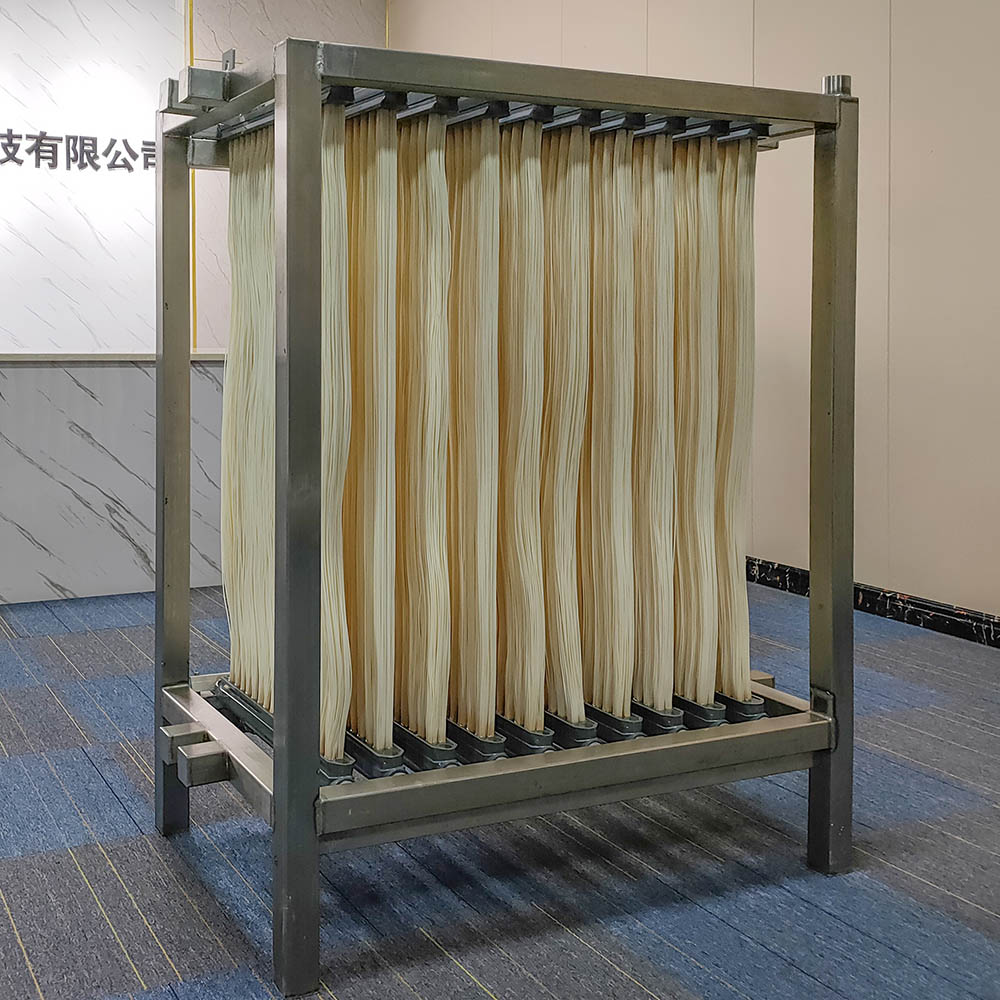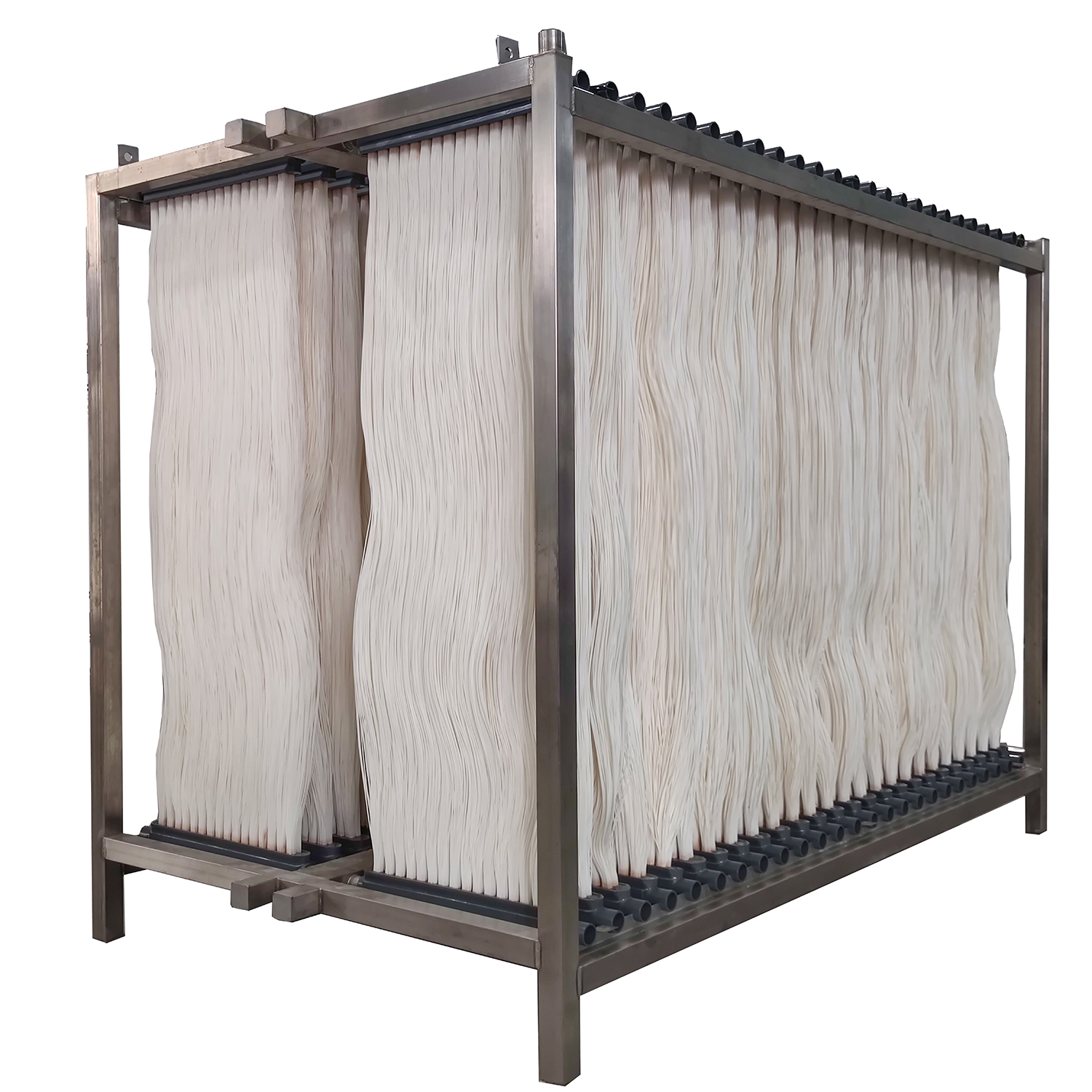Recognizing Membrane Layer Bioreactors: The Future of Wastewater Treatment
Membrane bioreactors (MBRs) represent a noteworthy innovation in the field of wastewater treatment, integrating biological processes with advanced membrane layer filtering to boost effluent high quality. As worldwide water scarcity and stringent regulatory frameworks end up being progressively pressing concerns, MBR modern technology supplies an effective feedback with its capability to minimize footprint and optimize resource healing. Nevertheless, the fostering of MBRs is not without its difficulties, which merit careful factor to consider. What are the crucial aspects influencing their application and lasting stability in various contexts? The solutions may reshape our method to wastewater management.
What Are Membrane Bioreactors?

The core components of MBR systems consist of a bioreactor where microbial task happens and a membrane layer device that filterings system the combined liquor. This double performance makes it possible for the simultaneous degradation of natural issue and solid-liquid splitting up in a single action. MBRs can run in both immersed and external configurations, with submerged systems being a lot more common because of their compact layout and operational efficiency.
The fostering of MBR technology has actually gained grip in different applications, varying from metropolitan wastewater therapy to commercial effluent monitoring. MBRs are specifically helpful in circumstances where space is stringent or minimal effluent top quality requirements must be satisfied. By keeping a high concentration of bacteria within the bioreactor, MBRs enhance the degradation of organic contaminants, consequently yielding greater therapy effectiveness compared to typical techniques.
Trick Benefits of MBR Modern Technology
The combination of biological treatment with membrane layer filtering in MBR systems offers numerous benefits that set it in addition to typical wastewater treatment methods. Among the key advantages is the improved effluent quality. MBRs effectively eliminate suspended solids and pathogens, accomplishing higher degrees of filtration that meet stringent discharge requirements and facilitate water reuse applications.

Another substantial advantage is the reduced sludge manufacturing. MBR systems produce less excess sludge, causing reduced disposal expenses and a decline in ecological effect. The shut nature of the membrane system decreases the risk of smell emissions and boosts total process control.
Last But Not Least, MBRs are adaptable and flexible, making them suitable for various wastewater kinds, consisting of commercial and metropolitan resources. The capacity to incorporate with innovative therapy modern technologies additionally boosts their effectiveness, making MBRs an appealing remedy for the future of wastewater monitoring.
Difficulties and Limitations of MBRs
While MBR modern technology offers many advantages, it additionally deals with a number of difficulties and constraints that can influence its extensive fostering. One substantial obstacle is the high capital and functional costs connected with MBR systems. The initial financial investment for membrane layer products and the essential framework can be significant, making it much less available for smaller sized districts or sectors.
Furthermore, membrane layer fouling continues to be a crucial issue that can reduce system efficiency and increase upkeep demands. Fouling occurs when solids, raw material, or bacteria build up on the membrane layer surface, causing reduced leaks in the structure and requiring constant cleansing or replacement.
One more restriction involves the intricacy of the modern technology. MBR systems need competent personnel for procedure and maintenance, which can be an obstacle in regions with minimal technical competence. The disposal of spent membrane layers presents environmental concerns, as the materials are commonly not naturally degradable and can add to waste management difficulties.
Last But Not Least, while MBRs can efficiently deal with a wide variety of wastewater, they might not appropriate for all applications, particularly those with high focus of fats, oils, and oils, demanding more study and technology read review to attend to these restrictions.
Applications of Membrane Bioreactors
In various sectors, membrane bioreactors (MBRs) have become a flexible option for wastewater therapy (Membrane Bioreactor). Their applications span metropolitan, industrial, and farming settings, showcasing their adaptability and effectiveness in diverse atmospheres. In municipal wastewater treatment plants, MBRs dramatically improve effluent quality, allowing for water reuse and decreasing the ecological effect of released wastewater
Industrially, MBRs are employed in food and beverage handling, fabric manufacturing, and pharmaceutical production, where they efficiently treat high-strength waste streams. Their capacity to deal with varying and changing tons impurity focus makes them specifically useful in these industries. Furthermore, MBRs promote the removal of pathogens, put on hold solids, and organic issue, adding to conformity with rigorous discharge regulations.
In agriculture, MBRs are progressively utilized for treating farming drainage and livestock wastewater, allowing the healing of nutrients for plant food production. They also aid in the treatment of greywater for irrigation, promoting sustainable water administration methods.
The versatility of MBRs is more evidenced by their integration with other innovations, such as anaerobic food digestion and progressed oxidation procedures, improving overall efficiency and resource recuperation in wastewater treatment systems.
The Future of Wastewater Treatment
Developments in innovation and an expanding emphasis on sustainability are forming the future of wastewater therapy. Membrane layer bioreactors (MBRs) exhibit this shift by integrating organic treatment procedures with membrane filtration, leading to high-grade effluent appropriate for reuse. The fad towards circular economies is motivating facilities to take on MBRs for their ability to recoup sources, such as water and nutrients, from wastewater.
Innovations in membrane layer materials and arrangement are improving the effectiveness and longevity of MBR systems, decreasing functional expenses and energy usage. Smart technology assimilation, consisting of real-time surveillance and automated control systems, is further maximizing performance and enabling anticipating maintenance, therefore reducing downtime.
In addition, societal expectations and governing pressures are pushing districts and markets to take on more lasting practices. Membrane Bioreactor. The shift towards decentralized wastewater treatment options is getting grip, enabling local therapy that reduces transport prices and energy usage
Verdict
Membrane bioreactors (MBRs) stand for a transformative strategy to wastewater therapy, integrating organic processes with sophisticated membrane technology. The advantages of MBRs, including improved effluent top quality, decreased spatial find out here requirements, and lower sludge manufacturing, place them as a viable remedy amidst expanding urbanization and more stringent environmental policies. Despite existing obstacles, the ongoing advancement in membrane materials and functional methods guarantees to reinforce the efficacy and adoption of MBRs, ensuring their pivotal role in the future of lasting wastewater administration.
Membrane bioreactors (MBRs) stand for a notable development in the area of wastewater treatment, integrating biological procedures with sophisticated membrane layer filtration to enhance effluent top quality.Membrane bioreactors (MBRs) incorporate biological treatment procedures with membrane filtration to properly deal with wastewater.The combination of biological therapy with membrane layer filtration in MBR systems supplies various benefits that set it apart from traditional wastewater therapy methods. Membrane bioreactors (MBRs) exhibit this shift by incorporating biological therapy processes with membrane layer great site filtration, resulting in high-grade effluent ideal for reuse.Membrane bioreactors (MBRs) represent a transformative technique to wastewater therapy, integrating organic procedures with advanced membrane modern technology.